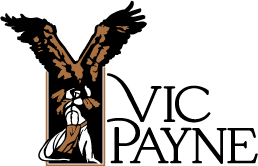BRONZE SCULPTURE
SHEEP EATERS: IN THE LAND OF THE TUKUDEKA,
PART ONE
Masterwork, Clay Bronze-In-Progress, Ltd. Ed. 25
Mountain lion and Big Horn Sheep, Approx. 54″H x 45″L x 13 1/2″D

The Tukudeka or Sheep Eater Indians were a part of the Eastern Shoshone later joining the Northern Shoshone. They were also known as the Mountain Shoshone. Their name more than likely came from the fact that they were hunters and eaters of Rocky Mountain sheep using the hides and other body parts for clothing, tools and utensils. Their small but powerful horn bows, made from rendered and straightened bighorn ram horns, were a highly sought after trade item by other Native American tribes along with their high quality clothing. It was said that these horn bows were capable of shooting an obsidian-tipped arrow straight through a buffalo.
They lived high in the Yellowstone and northern Rocky Mountains along the Idaho, Montana and Wyoming area favored by the bighorn sheep they ate. Most of their fascinating way of life is shrouded in mystery and misconception. It is unclear whether they had lived in the Yellowstone area for 10,000 years or arrived less than 1,000 years ago. What we do know is that in the 1870’s, superintendent of Yellowstone, Philleus Norris, decided to eradicate all Indians from the park and place them in reservations at Wind River and Fort Hall. A few small groups escaped the eradication and lived in the remote mountains of Yellowstone as their ancestors did until 1890.
Much can be learned by the Tukudeka, or Sheep Eater’s artifacts that were left behind in the mountains or that can be seen on beautiful petroglyphs. We can glean that they were talented artisans and very spiritual people. Because they lived high in the mountains, often above 7,500 feet, the extended Shoshone nation believed them to be great medicine men. The Land, bighorn sheep and the surrounding plant resources dictated their way of life. They were a semi-nomadic people who moved seasonally in small, kin-based bands, following the migratory pattern of bighorn sheep traveling through portions of the Absaroka, Wind River and Beartooth ranges. They did not use horses as readily as other tribes did. They remained deeply immersed in the traditional way and preferred to travel by foot. They did however utilize large dogs to help carry their possessions in their migratory travels as well as for hunting their primary food source.
Today we can still find remnants of their resourcefulness left behind high in the mountains. Wikki-ups, dwellings made out of fallen timber that were cone shaped like a tepee, caves carved into mountain’s crevices, inventive sheep traps made of wood and stone and stone pits that a hunter could hide in then use his dogs to chase the sheep right to him are a reflection of why these people were called the Guardians of the Mountains.
In this piece, Vic pays homage to an often forgotten people whose accomplishments have largely been overlooked in the histories of Native American and American cultures.


